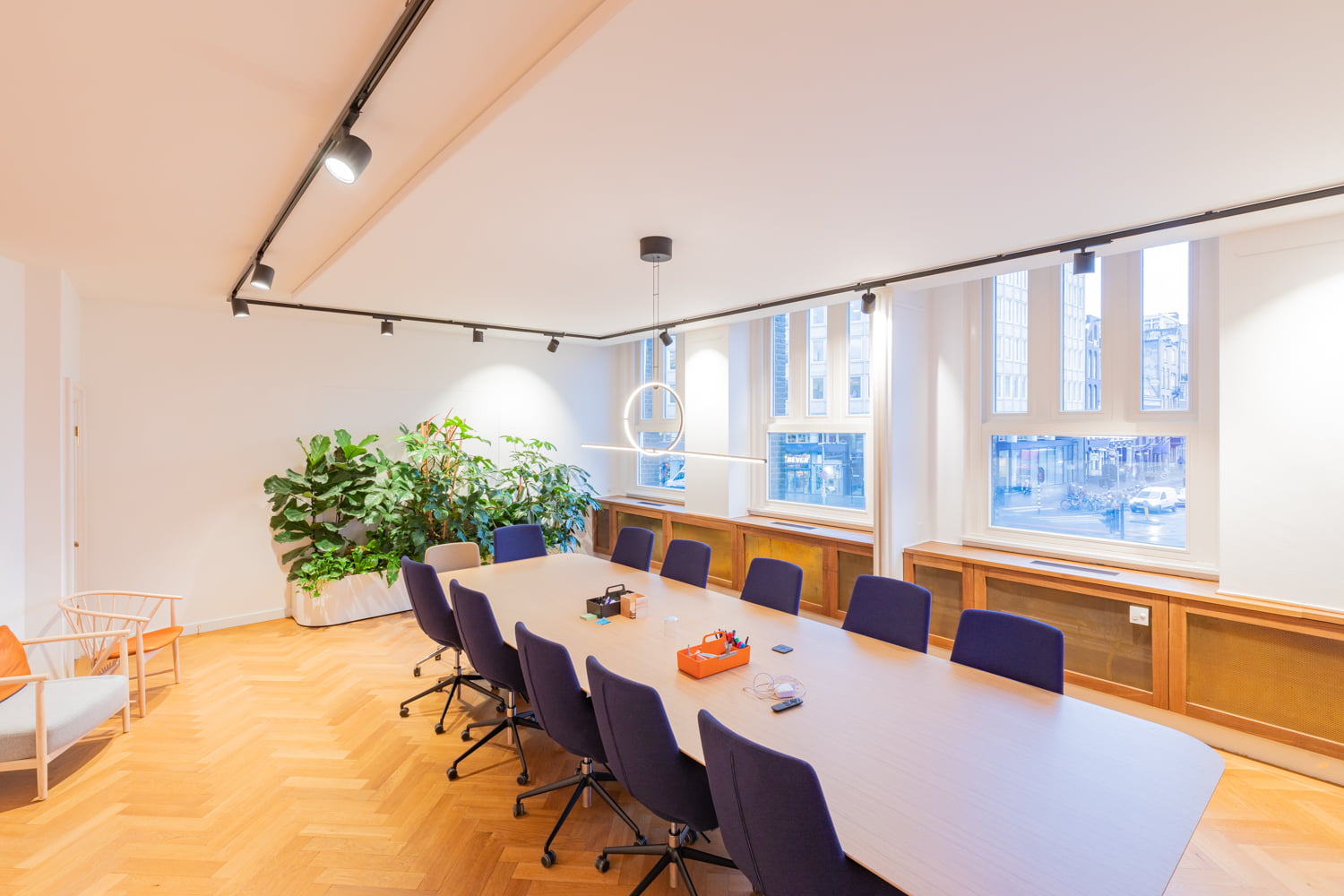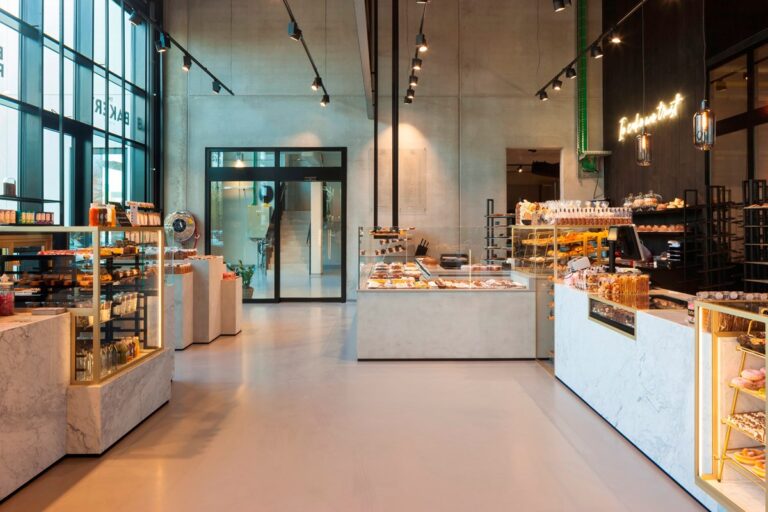Office lighting for interior designers
Light is a design material. It determines not only what is visible, but also how a space feels. As an interior designer, you use light to create structure, atmosphere and tranquility. Yet office lighting presents an additional challenge: the combination of aesthetics, technology and standard.
A luminaire may look beautiful in design, but in practice glare, uneven light or the wrong color temperature quickly cause complaints. Office lighting must therefore be both functionally and visually comfortable and comply with NEN-EN 12464-1.
At Lixero, we help (interior) architects find that balance: designs that look good, feel good and are technically correct. Fully supported by calculations, product knowledge and possible sustainable solutions.
Light as a design language
In modern office architecture, lighting is no longer an afterthought. Lines follow routing, spotlights emphasize texture and indirect light makes high ceilings quieter. For interior designers, it is a means of letting architecture speak for itself.
A good lighting plan starts with the function of the room. Where will concentration work take place, where will consultation take place, where will movement take place? From that program you can define light zones, each with a different purpose: task lighting on work surfaces, accent lighting for identity and orientation and indirect light for rest and balance.
The quality of light then determines the experience. A workplace with 500 lux may formally meet the standard, but feel wrong if the color rendering(CRI) is too low or the UGR is too high. That is precisely what distinguishes good design from good design. You can find more about the technical background in
What is UGR?
and
What is CRI?
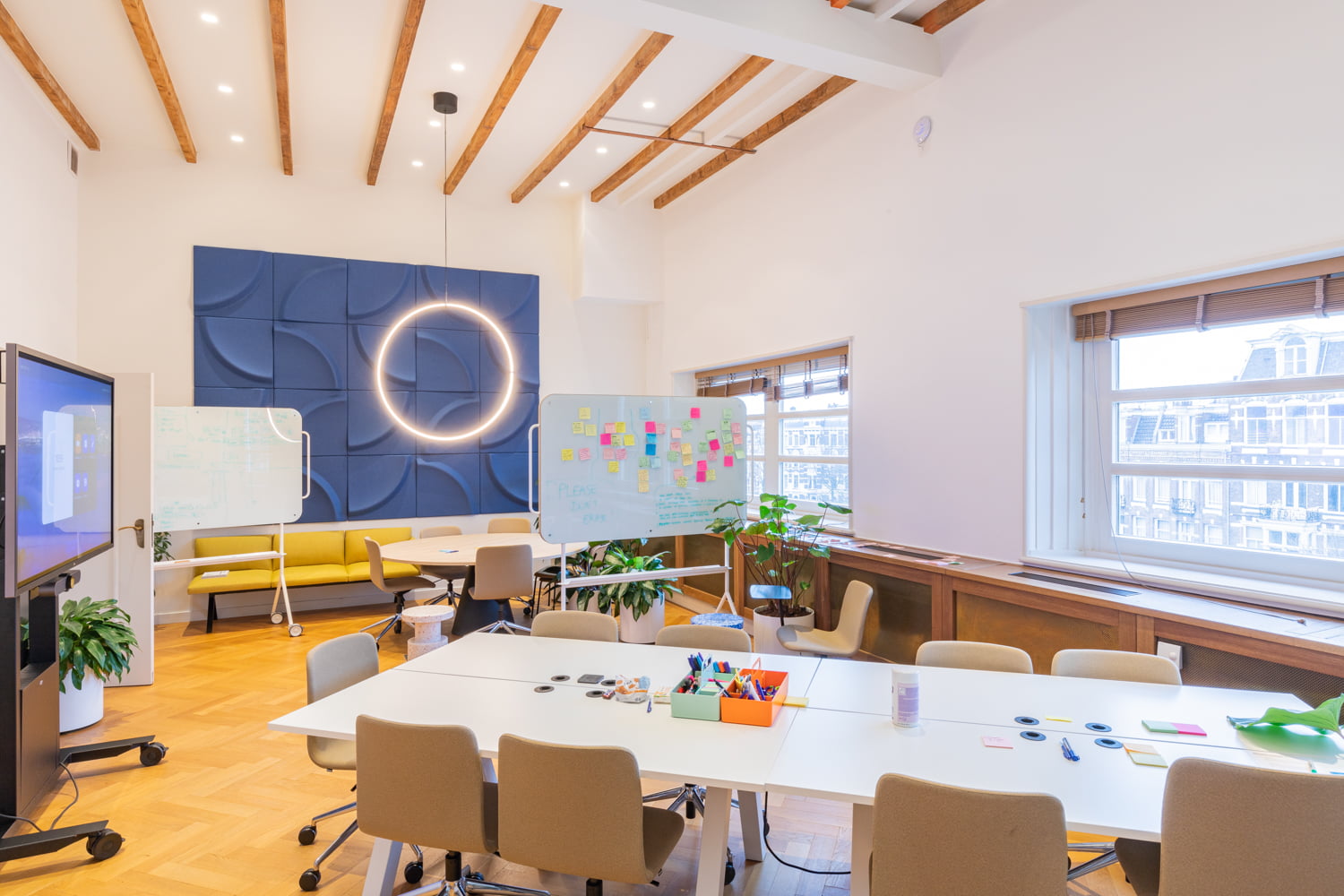
The standard as a tool
The
NEN-EN 12464-1
provides direction, not limitation. This standard prescribes that workplaces must have a minimum of 500 lux, a UGR ≤ 19, and a CRI ≥ 80. Uniformity (Uo ≥ 0.6) is also important, as the light must be evenly distributed.
Within those frameworks, there is plenty of design freedom. You can play with fixtures, light distribution and color temperature, as long as the basic values remain guaranteed. Practice shows that a lighting plan with contrast, layering and warm zones often performs better in terms of comfort than a uniform grid.
For a lighting plan, DIALux is an indispensable tool to do just that. You can calculate, render and check whether your design meets the standard. Several interior designers followed the
Those who want to know more about the specific requirements can read further in
What is NEN-EN 12464-1?
.
Light color and material
Color temperature(Kelvin) and color rendering(CRI) together determine how a space feels. In offices, neutral white light (about 4000K) works best for concentration, while in reception areas or lounges, a warmer tone (2700K – 3000K) brings more calm.
A high CRI value (90+) ensures that colors of materials, wood and textiles remain natural. This is crucial in interiors with lots of color and texture. SDCM (color consistency between luminaires) also plays a role, as small differences in color temperature create visual unrest.
Moreover, the combination of light and material determines the perception of light levels. Dark surfaces absorb more light and light shades reflect. Therefore, in lighting plans, we often use reflection factors depending on the surface. This way, you know in advance how the room reacts to light.
Want to know more about the technical background of this? Then read
What is color temperature (Kelvin)?
.
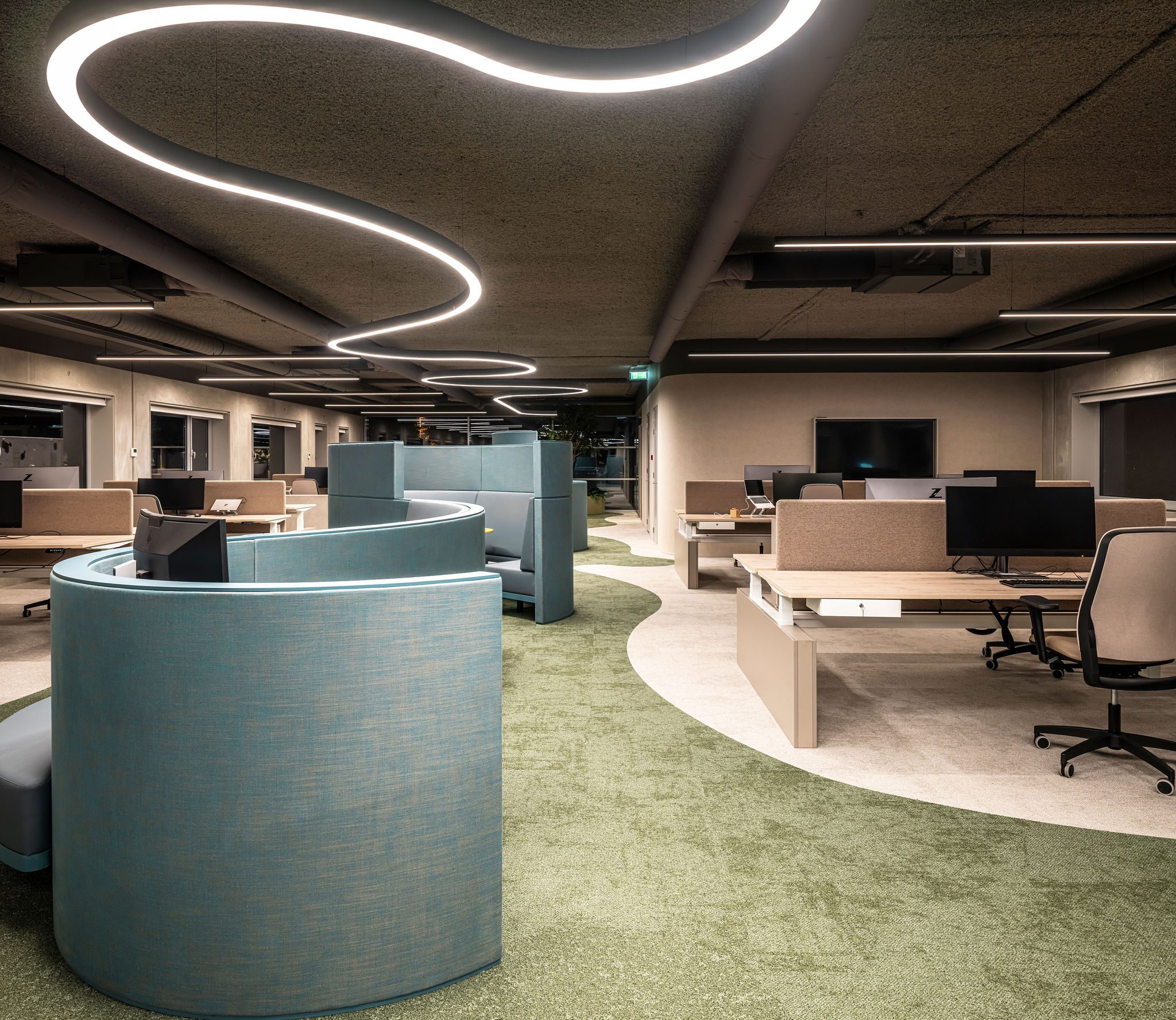
Efficiency and comfort
In office lighting, LED is no longer just about efficiency (lm/W), but about stable light display, good driver quality and thermal management. A luminaire with L90B10 100,000 hours performs much more consistently in practice than a cheaper model with L80B50 50,000 hours.
As an interior designer, you want to know how those technical values affect the visual image. Aging LEDs (lumen maintenance) and fixture pollution cause light levels to drop over time. Therefore, we calculate a maintenance factor to compensate for that.
In addition, the choice of optics (lenses, microprism, darklight) determines the UGR. So you can meet the standard even with aesthetically pleasing luminaires. In office projects such as Donna Eindhoven and Miro Amsterdam, we have brought together exactly that: designer luminaires with controlled luminance.
Want to know more about efficiency and light output? Check out What is Lumen/Watt ratio? And why is it important?
Smart steering
More and more interior designers are integrating lighting controls into their designs. With DALI you control groups or zones via the building management system and with Casambi you do so wirelessly via Bluetooth.
For renovation projects, Casambi is particularly interesting. Because each luminaire forms a node in a mesh network, allowing you to set scenes, timers and daylight control without additional wiring. In our practical projects, we often use Casambi in office or store redesigns. Like at Keurslager van der Meer Heerenveen, to be able to flexibly switch between presentation and maintenance light.
In new construction, DALI is still the standard: stable, reliable and perfectly integrated into building automation. The choice between the two systems depends on the situation, but for designers: think about the control early, because it also determines your luminaire selection.
Read more about how both systems work in
What is Casambi?
and
What is DALI lighting?
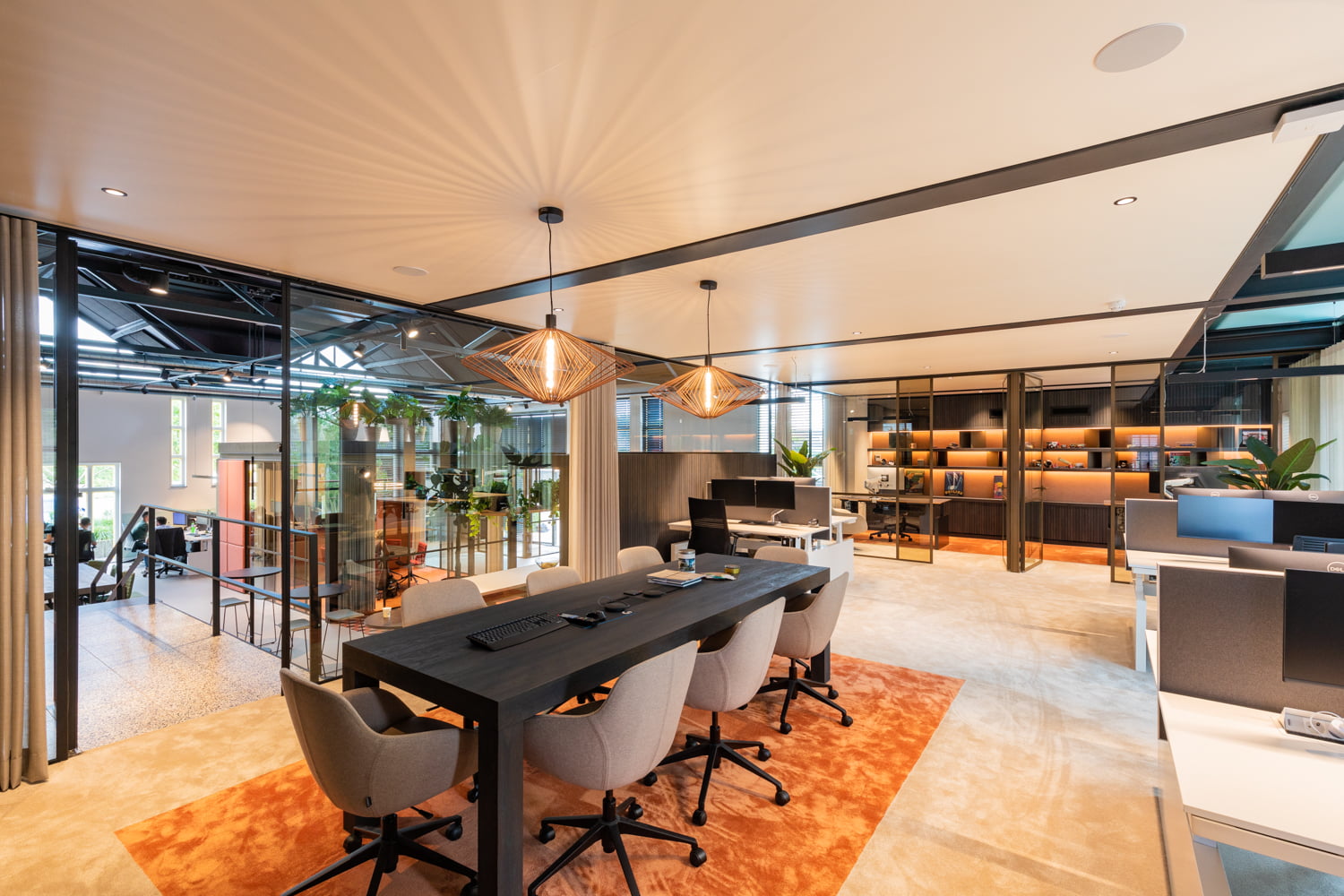
Sustainable office lighting
Sustainability is no longer an afterthought, but a design requirement. Architects want to be able to reuse materials, and clients demand circular solutions. That is why Lixero developed
Yuugn
: 3D printed luminaires made of recycled PETG, produced locally in the Netherlands and almost completely reusable.
Yuugn combines freedom with responsible manufacturing. Each fixture is made to order, so there is no overstock or waste. At the end of life, we take the fixtures back and reuse the material for new production.
For interior designers, that means freedom, customization and measurable circularity. Moreover, Yuugn is assembled locally in collaboration with Maakwerk Deurne, a social enterprise. That makes circular design not only sustainable, but also social.
Learn more about this product line at Circular Lighting.
Collaborating with Lixero
Good office lighting is the result of collaboration: designers, installers and suppliers who understand each other. At Lixero, we therefore like to work with interior designers from the sketch phase onward. That way we avoid adding light only when everything is already fixed.
Our way of working is simple and transparent
- A conversation about function, atmosphere and materials, among other things.
- A lighting plan with DIALux calculations, including product selection
- Delivery and assembly if required
- Adjustment and documentation upon delivery
You can find more about our approach at
Our approach
or
Lighting plan
. Those wishing to have a project included can schedule an appointment using our contact form.

Checklist for (interior) architects
In any office design, you can include these points:
Consider reflection values of walls, floors and ceilings.
Check UGR ≤ 19 in DIALux, not just the lux values.
Choose the appropriate color temperatures for each zone.
Note CRI ≥ 90 in interiors with natural materials.
Consider early control (DALI or Casambi) and power supply.
Consider circular fixtures (Yuugn) in tenders with SRI criteria.
Lock maintenance factor into your calculation so that your light levels are maintained.
Office lighting for interior designers
For interior designers, light is not an addition, but an integral part of the design. The challenge lies in combining atmosphere and standard, design and technology, perception and calculation.
Those who master this create interiors that are right both visually and functionally, spaces that bring calm, reinforce identity and feel pleasing.
Want to spar about lighting in your design? Schedule a no-obligation consultation via
Conversation
, or request a Lighting plan request.

